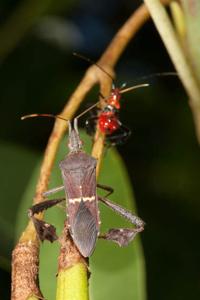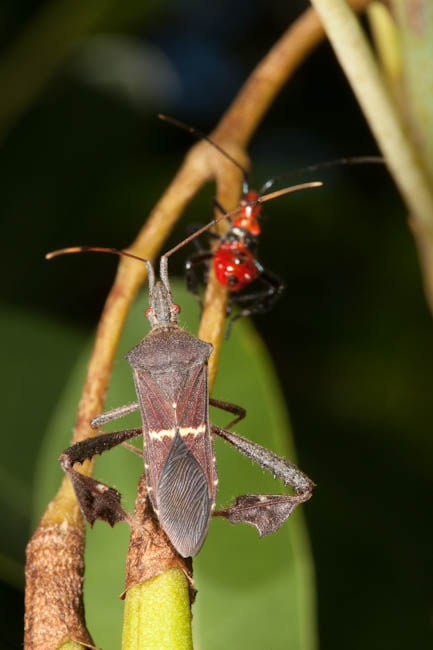Q: I live in Sierra Vista and have a small peach tree, about 3 to 4 years old. Last spring it bloomed for the first time and set about a dozen peaches. When the fruit was a bit smaller than golf ball size, I noticed each one had a small hole and was oozing a clear sap-like substance. I assume an insect of some kind that had bored into the fruit caused it. Each peach shriveled up and fell off the tree. With what should I treat my tree and when to prevent this again?
A: Peaches and other fruits such as pomegranates are potential food for a few different insect species. Based on your description, I suspect one of the larger plant bugs we refer to as leaf-footed bugs. They have piercing-sucking mouthparts that penetrate the fruit to suck out the sap. Their saliva has a toxin in it that injures the fruit. The resulting wound is also an entry point for disease and that is possibly what caused the fruit to shrivel and fall from the tree. Treating for this insect is challenging because as adults they are fast moving and can fly. The insecticides used are contact poisons so you need to know where they are and hit them directly with the treatment. There are organic and conventional insecticides available for this pest.
The best time to treat for them is when they are young. The young are yellow-orange in color and usually hang out in a group. Since you have a small tree this will be easier than if you had an orchard of trees to monitor.
The other thing you can do is look for eggs on your tree and remove them before they hatch. This hatch occurs in a week or less after they are laid so monitoring once a week is critical to removing them before they emerge. The eggs are laid in a row along a stem or the midrib of a leaf and are golden-brown in color. Since these insects also feed on citrus and pomegranates, it is good to monitor those plants as well if you have them nearby.
Peter L. Warren is the urban horticulture agent for the Pima County Cooperative Extension and the University of Arizona. Questions may be emailed to




